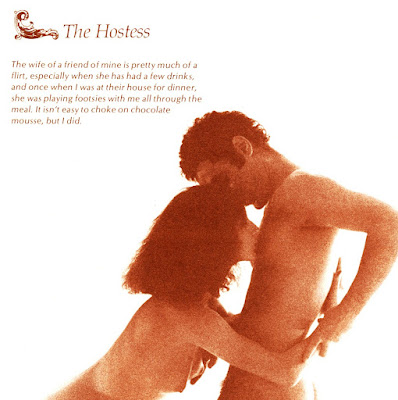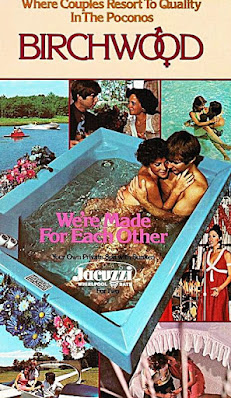Book Review: 'Beyond the Occult' by Colin Wilson
'Beyond the Occult' (381 pp.) was published in hardback in 1989 by Carrol and Graf.
In his Introduction, Wilson states that his interest in the occult began in the late 1960s when he was contacted by a publisher eager to capitalize on the success of the book 'The Morning of the Magicians', by Pauwels and Bergier. 'Morning' was a bestseller upon its release in France in 1960 and it went on to do equally well with its English-language translations. Wilson was sufficiently intrigued by the topic of the occult to agree to write a book about it.
That book was 'The Occult', and upon its publication in 1971, it was very well received, coinciding as it did with the rise in the early 1970s of interest in supernatural phenomena.
 |
advertisement from a 1974 issue of National Lampoon
|
For Wilson, 'The Occult' was not a catalogue of spells and instructions in magical practices, but a recounting of the 'scientific actualities' that constitute supernatural activities. These 'actualities' confirmed his belief that man possesses 'hidden powers', lumped under the rubric of 'Faculty X', which are otherwise unavailable to the great, unwitting mass of Homo sapiens. Wilson saw 'Faculty X' as a component of his philosophy of 'New Existentialism', which he introduced in 1966 in a book titled 'Introduction to the New Existentialism.'
'Beyond the Occult' is simply a recapitulation of the ideology of Faculty X, as it was outlined in 'The Occult', using examples from what is known as the 'paranormal'.
In the first two-thirds of 'Beyond the Occult' Wilson chronicles - primarily using examples from the 19th and 20th centuries - paranormal phenomena such as (among other things) psychometry, clairvoyance, precognition, astral bodies, 'second sight', multiple personalities, possession, and synchronicity.
The book's closing chapters are a rather labored manifesto for the world to acknowledge the existence of Faculty X, which will, in turn, expedite the movement of the world's peoples into a sort of humanistic Singularity.
From the opening chapters it will be very apparent to the reader that in his zeal to collect anecdotes about the paranormal to support his thesis of Faculty X, Wilson exaggerates and misleads about all manner of alleged psychic phenomena and practitioners. To give two examples from the many presented in 'Beyond the Occult':
• On page 165, Wilson alludes to the novel 'The Wreck of the Titan, or, Futility', published in 1898 by the American author Morgan Robertson, as an example of 'precognition', in that Robertson's novel deals with the lethal collision of an 'unsinkable' ocean liner, christened the Titan, with an iceberg. Wilson remarks that Robertson claimed to be an 'automatic' writer who composed his novels while in something of a trance-like state. This state, Wilson claims, allowed Robertson to subconsciously open his mind to the 'information universe', which in turn imparted to him knowledge of the sinking of the liner Titanic in 1912.
However, Wilson does not disclose that throughout his life Robertson strenuously denied that his novel was an example of precognition, insisting that his familiarity with nautical matters gave him insight into the circumstances of a hypothetical disastrous accident at sea.
• On pages 231 and 232, Wilson alludes to the Fox sisters of Hydesville New York, who in March 1848 claimed to a neighbor that a spirit had invaded their house, and was communicating via knocks and raps. The sister claimed the spirit was the ghost of a peddler who had been murdered by the home's previous occupant, and buried in the basement. By late 1849 the sisters and their encounters with the supernatural had triggered a national frenzy of interest in 'mediums' and 'spiritualism'. Wilson references the discovery, made in 1904, of human bones in a secret room in the basement; this discovery was deemed proof of the murder, and interment, of the peddler.
Wilson fails to mention that in 1888, Margaretta Fox publicly declared that the rappings were fraudulent, the product of the sisters cracking their ankle and foot joints. And a physician who examined the bones in the secret basement room concluded that the bones (which included chicken bones) were nothing more than a prank.
Well before the halfway point of 'Beyond the Occult', Wilson's habit of assigning credulity to these and all manner of paranormal phenomena began to pall. No anecdote or experience was too preposterous for Wilson to endorse in the name of 'Faculty X'. Indeed, in the chapter titled 'Visions', Wilson breathlessly relates the antics of one Stylianos Atteshlis, aka 'Daskalos', a Cypriot 'magus' who, in July 1979, claimed to have telepathically persuaded 'flying saucer entities' to alter the orbit of the Skylab space station so that it crashed into the southern hemisphere rather than the (more populated) northern hemisphere !
I finished the book more out of a sense of duty, than enthusiasm. In my opinion, only the most fervent of Wilson aficionados will enjoy 'Beyond the Occult'. For everyone else, it has some slight value as a compendium of observations of some of the most 'woo-woo' entries in the global catalogue of paranormal phenomena.






%20-%20Page%2058.jpg)








%20-%20Page%209.jpg)
































































